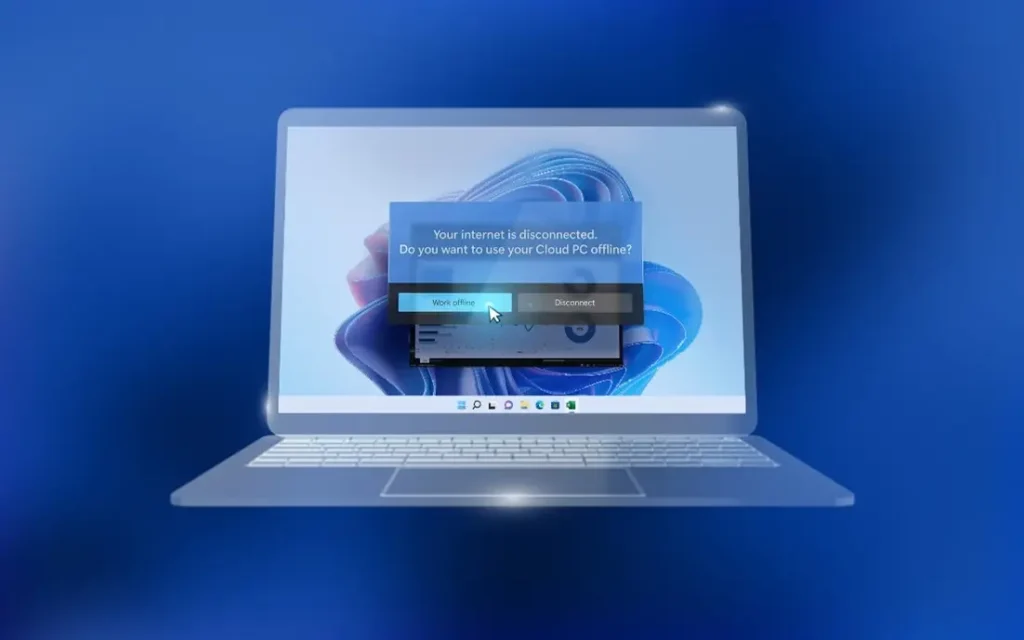Microsoft’s Windows 365 service, which allows organizations to stream a full version of Windows to any device, has made inroads in the cloud computing arena. But the software behemoth is not done yet. It also has a long-term goal of moving Windows 11 completely to the cloud for consumers.
What is Windows 365?
Windows 365 is a subscription service that delivers a full version of Windows to devices. So far, it has only been available to commercial clients, but Microsoft has already deeply integrated it into Windows 11. Windows 365 Boot will be included in a future update, allowing Windows 11 devices to boot directly into a Cloud PC instance rather than the local version of Windows. Windows 365 Switch is also included into Windows 11 and allows Cloud PCs to be integrated into the Task View (virtual desktops) capability.
Windows 365 is intended to deliver a uniform and secure Windows experience across devices, independent of their hardware or operating system. Users can access and switch between their personal settings, apps, and content from any device with an internet connection. Windows 365 also includes features like automated updates, backup, and recovery.
Why does Microsoft want to move Windows 11 to the cloud for consumers?
In a June 2022 internal “state of the business” Microsoft presentation disclosed as part of the ongoing FTC v. Microsoft hearing, Microsoft envisions improving on “Windows 365 to enable a full Windows operating system streamed from the cloud to any device.”
Moving “Windows 11 increasingly to the cloud” is described as a long-term potential in Microsoft’s “Modern Life” consumer market, which includes leveraging “the power of the cloud and client to enable improved AI-powered services and full roaming of people’s digital experience.”
Microsoft intends to use the cloud to improve the capabilities and features of Windows 11, particularly in the areas of artificial intelligence, personalisation, and productivity. Microsoft, for example, has unveiled Windows Copilot, an AI-powered companion for Windows 11. Windows Copilot sits on the side of Windows 11 and can summarize, rewrite, or clarify whatever you’re watching in apps. Microsoft is currently testing this internally and has promised to make it available to testers in June before making it available to all Windows 11 users.
Microsoft also intends to use the cloud to make Windows 11 more accessible and inexpensive for customers, particularly in emerging areas where device expenses and internet connectivity are prohibitively expensive. Microsoft may be able to reach more customers who do not have access to high-end devices or dependable internet connections by streaming Windows 11 via the cloud.

What are the challenges and opportunities for Microsoft in moving Windows 11 to the cloud for consumers?
Moving Windows 11 to the cloud for customers is fraught with difficulties and risks. Microsoft will have to deal with issues including privacy, security, performance, dependability, compatibility, and cost. Microsoft will also have to compete with alternative cloud-based operating systems that have gained popularity among customers in recent years, such as Chrome OS and Android.
Moving Windows 11 to the cloud for users, on the other hand, provides tremendous opportunity for Microsoft to innovate and differentiate its operating system from competitors. Microsoft’s expertise and leadership in cloud computing, artificial intelligence, gaming, and productivity may be used to generate new customer experiences and value propositions. Microsoft may also tap into its enormous and devoted user base of Windows customers who may be interested in experimenting with a new method of utilizing their preferred operating system.
Microsoft has not stated any particular plans or dates for completely deploying Windows 11 to the cloud for customers, but it is apparent that this is part of the company’s long-term vision and strategy. Microsoft wants to ensure that Windows remains relevant and competitive in the shifting computing landscape as hybrid work becomes more popular and consumer expectations evolve.





More Stories
NotebookLM: Google’s new AI-powered notes app that helps you learn faster
Why gamers will love Windows 11 and why others will hate it
The benefits of using a VPN and how to choose the best one for you